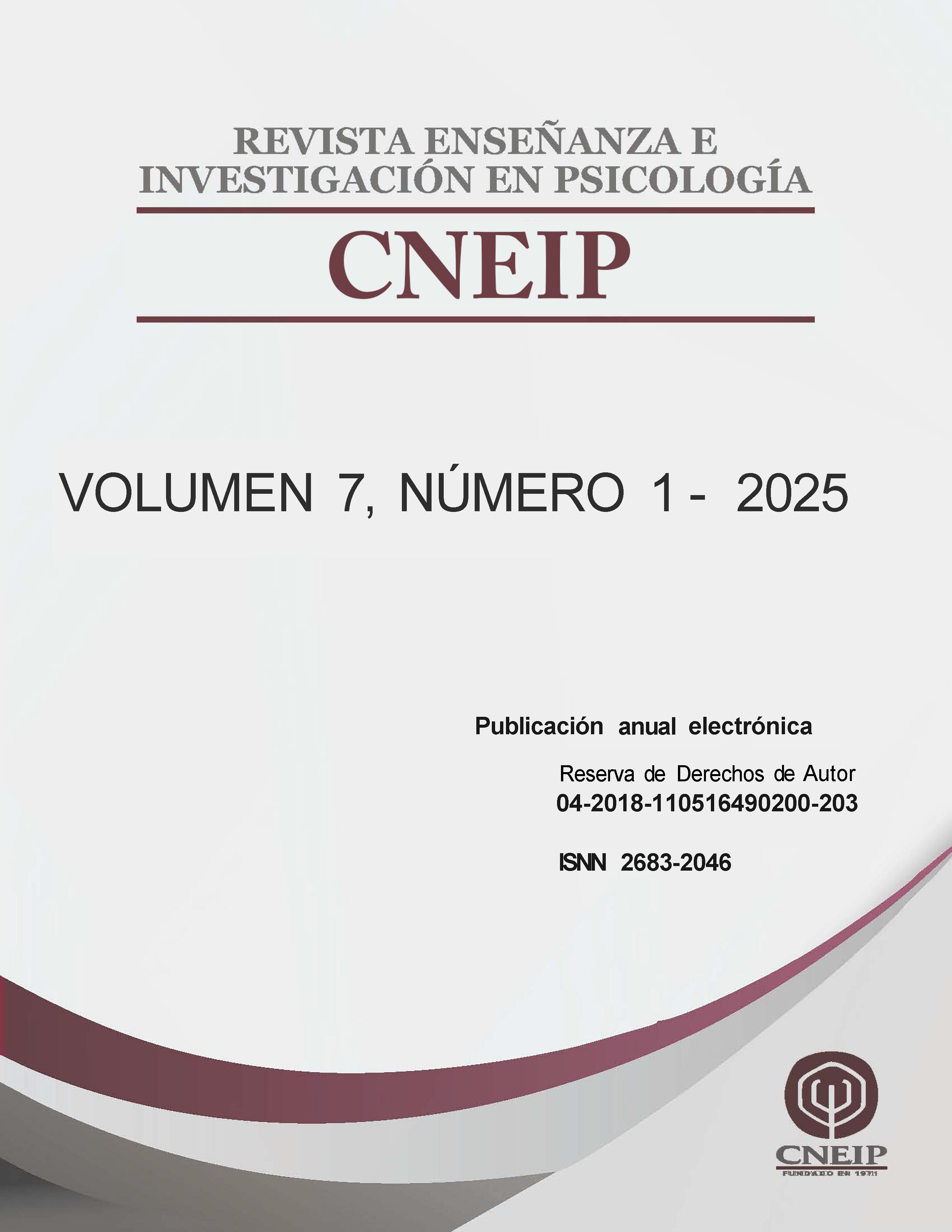Abstract
The COVID-19 pandemic represented challenges to both physical and mental health. In China, migrants from various professional fields became isolated by various quarantines and other arrangements. The current research focused on migrant teachers in Zhuhai, China, using survey data to analyze the protective role played by sense of coherence, against the development of burnout syndrome symptoms. The analysis detected a moderate correlation of .583 (p < .001) between stress levels and burnout and a negative, moderate correlation between sense of coherence and burnout symptoms of -.541 (p < .001), in support of two key hypotheses. A third hypothesis, concerning the moderating role of sense of coherence, could not be tested due to limitations of the statistical sample. These results underscore the importance and challenges of supporting a sense of coherence that can mitigate the negative impacts of excessive workplace stress.
References
Albrecht, S., y Su, M. (2012). Job resources and employee engagement in a Chinese context: the mediating role of job meaningfulness, felt obligation and positive mood. International Journal of Business and Emerging Markets, 4(4), 1-20. DOI: 10.1504/IJBEM.2012.049823
Antonovsky, A. (1987). Unraveling the mystery of health. How people manage stress and stay well. Jossey-Bass Publishers.
Antonovsky, A. (1993). The structure and properties of the sense of coherence scale. Social Science and Medicine, 36(6), 725-733. DOI: 10.1016/0277-9536(93)90033-Z
Basson, M., y Rothmann, S. (2002). Sense of coherence, coping and burnout of pharmacists. South African Journal of Economic and Management Science, 5, 35-61. DOI: 10.4102/sajems
Bracha, E., y Bocos, M. (2015). A sense of coherence in teaching situations as a predictor of first year teaching interns' burnout. Procedia- Social and Behavioral Sciences, 209, 180–187. DOI: 10.1016/j.sbspro.2015.11.276v5i1.2664
Cohen, S., Kamarck, T., y Mermelstein, R. (1983). A global measure of perceived stress. Journal of Health and Social Behavior, 24(4), 385-396. DOI: 10.2307/2136404
Demerouti, E. (1999). Oldenburg Burnout Inventory. APA PsycTests.
DOI: 10.1037%2Ft01688-000
Eriksson, M., y Lindström, B. (2006). Antonovsky's sense of coherence scale and the relation with health: A systematic review. Journal of Epidemiology and Community Health, 60(5), 376- 381. DOI: 10.1136/jech.2005.041616
Ferguson, S., Davis, D., Browne. J., Taylor, J. (2015) Examining the Validity and Reliability of Antonovsky’s Sense of Coherence Scale in a Population of Pregnant Australian Women. Evaluation and the Health Professions, 38 (2), 280-289. DOI: 10.1177/0163278715578558
Fernández-Martínez, E., Liébana-Presa, C., y Moran-Astorga, C. (2017). Relación entre el sentido de coherencia y el cansancio emocional en estudiantes universitarios. Psicología, Sociedad y Educación, 9(3), 393-403. DOI: 10.25115/psye.v9i3.861
González-Siles, P., Martí-Vilar, M., González-Sala, F., Merino-Soto, C., y Toledano-Toledano, F. (2022). Sense of coherence and work stress or well-being in care professionals: A systematic review. Healthcare, 10, 1347. DOI: 10.3390/healthcare10071347.
Herrero, J. y Meneses, J. (2006). Short Web-based versions of the perceived stress (PSS) and Center for Epidemiological Studies-depression (CESD) Scales: A comparison to pencil and paper responses among Internet users. Computers in Human Behavior, ,2, 830–846. DOI: 10.1016/j.chb.2004.03.007
IBM Corp (2021). Statistical package for the social sciences (versión 28.0) [Programa de computadora]. IBM Corp. https://www.ibm.com/products/spss-statistics
Maslach, C., Jackson, S. E., Leiter, M. P., Schaufeli, W. B., y Schwab, R. L. (1986). Maslach Burnout Inventory. Consulting Psychologists Press.
Matsushita, M., Ishikawa, T., Koyama, A., Hasegawa, N., Ichimi, N., Yano, H., Hashimoto, M., Fujii, N., y Ikeda, M. (2014). Is sense of coherence helpful in coping with caregiver burden for dementia? Sense of coherence in dementia care. Psychogeriatrics, 14(2), 87–92. DOI: 10.1111/psyg.12050
Navarro Prados, A. B., Jiménez García-Tizón, S., y Meléndez, J. C. (2021). Sense of coherence and burnout in nursing home workers during the COVID-19 pandemic in Spain. Health and Social Care in the Community, 30, 244-252. DOI: 10.1111/hsc.13397
Oubibi, M., Fute, A., Xiao, W., Sun, B., y Zhou, Y. (2022). Perceived organizational support and career satisfaction among Chinese teachers: The mediation effects of job crafting and work engagement during COVID-19. Sustainability, 14(2), 623. DOI: 10.3390/su14020623
Rajesh, G., Eriksson, M., Pai, K., Seemanthini, S., Naik, D. G., y Rao, A. (2016). The validity and reliability of the Sense of Coherence scale among Indian university students. Global Health Promotion, 23(4), 16-26. DOI: 10.1177/1757975915572691
Ricardo, Y. R., y Paneque, F. (2014). Hacia un estudio bidimensional del síndrome de burnout en estudiantes universitarios. Ciência y Saúde Coletiva, 19, 4767-4775. DOI: 10.1590/1413-812320141912.18562013
Rothmann, S., Jackson, L., y Kruger, M. (2003). Burnout and job stress in a local government: The moderating effect of sense of coherence. SA Journal of Industrial Psychology, 29(4). DOI: 10.4102/sajip.v29i4.122
Shoman, Y., Marca, S. C., Bianchi, R., Godderis, L., van der Molen, H. F., y Guseva Canu, I. (2021). Psychometric properties of burnout measures: a systematic review. Epidemiology and Psychiatric Sciences, 30, e8. DOI:10.1017/S2045796020001134
Si, J. (2024). Higher education teachers’ professional well-being in the rise of managerialism: insights from China. Higher Education, 87, 1121–1138. DOI: 10.1007/s10734-023-01056-2
Steinlin, C., Dölitzsch, C., Kind, N., Fischer, S., Schmeck, K., Fegert, J. M., y Schmid, M. (2017). The influence of sense of coherence, selfcare and work satisfaction on secondary traumatic stress and burnout among child and youth residential care workers in Switzerland. Child and Youth Services, 38(2), 159–175. DOI: 10.1080/0145935X.2017.1297225
Stoyanova, K., y Stoyanov, D. (2021). Sense of coherence and burnout in healthcare professionals in the COVID-19 era. Frontiers in Psychiatry, 12. DOI: 10.3389/fpsyt.2021.709587
Tipa, R. O., Tudose, C., y Pucarea, V. L. (2019). Measuring burnout among residents using the Oldenburg Burnout Inventory (OLBI) instrument. Journal of Medicine and Life, 12(4), 354-360. DOI: 10.25122/jml-2019-0089
Vallejo, M. A., Vallejo-Slocker, L., Fernández-Abascal, E. G., y Mañanes, G. (2018). Determinación de los factores para la percepción del estrés evaluados con la escala de estrés percibido (PSS-4) en muestras en español y otras muestras europeas. Fronteras en la psicología, 9, 37. DOI: 10.3389/fpsyg.2018.00037
Wang, X. (2023). How Chinese attitudes toward COVID-19 policies changed between June and early December 2022: Risk perceptions and the uses of mainstream media and WeChat. SSM - Population Health, 23, 101467. DOI: 10.1016/j.ssmph.2023.101467.
Warttig, S. L., Forshaw, M. J., South, J., y White, A. K. (2013). New, normative, English-sample data for the Short Form Perceived Stress Scale (PSS-4). Journal of health psychology, 18(12), 1617–1628. DOI: 10.1177/1359105313508346
Zanin, M., Xiao, C., Liang, T., Ling, S., Zhao, F., Huang, Z., Lin, F., Lin, X., Jiang, Z., y Wong, S. S. (2020). The public health response to the COVID-19 outbreak in mainland China: a narrative review. Journal of Thoracic Disease, 12(8), 4434–4449. DOI: 10.21037/jtd-20-2363

This work is licensed under a Creative Commons Attribution-NonCommercial-NoDerivatives 4.0 International License.
Copyright (c) 2025 Enseñanza e Investigación en Psicología





